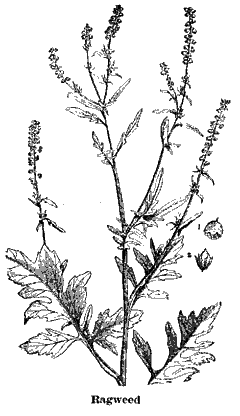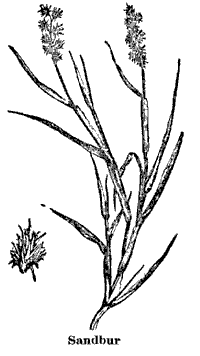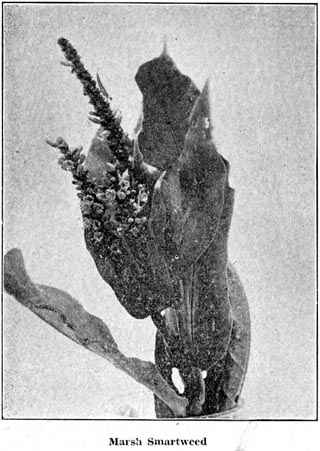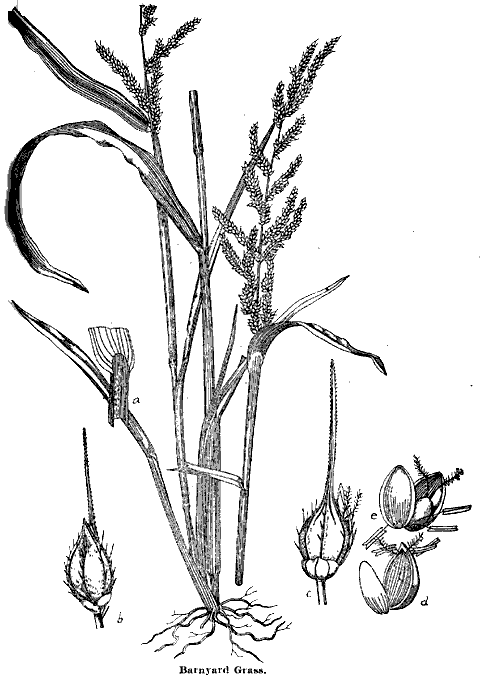NEGenWeb
Project
Resource Center
Schools
|
228 |
|
The Russian thistle dies when cut off at the surface of the ground; therefore it is not a serious pest in well-cultivated fields. The roadsides, pastures, meadows, etc., where the thistle is common should be mowed before seeding time. If this practice is continued for two or three years the Russian thistle can easily be eradicated. However, one man who fails to destroy the thistles growing on his place can infest the entire neighborhood because of the tumbling nature of the weed.

BUFFALO-BUR
(Genus-Solanum)
The buffalo-bur is a native of the west but has gradually worked east until it is found in all parts of Nebraska. It resembles the horse nettle, and, like it, is related to the potato. However, it differs la that it has very spiny burs, in place of smooth berries, and has yellow flowers, also more and stronger spines than are generally found on the
|
|
229 |
horse nettle. The burs become fastened to rabbits and other animals, by which means the black, irregular seeds are scattered far and wide. As the plants are somewhat bushy, they sometimes break loose at the surface of the ground and tumble long distances, scattering their seeds as they go.
As the buffalo-bur is an annual, it can be destroyed by cutting before seeding. The seeds are found in alfalfa and clover. The plants are seldom found in fields that are thoroughly cultivated.
(Genus-Ambrosia)
The two ragweeds commonly seen in this country are the "smaller" and "greater" ragweeds. These pests are both annuals. Both are found along roadsides, low ground and waste places, but the smaller ragweed is very common in cornfields. The greater ragweed grows from four to eight feet high but the smaller species seldom attain a height to exceed four feet. The stems of both kinds are very rough and the leaves divided. The flowers are pale green in color and during a certain stage in their development will leave a red stain on the skin if pressed between the thumb and first finger. The brown, urn-shaped, beaked, tapering seeds are found in oats, wheat, barley, and other grains, from which they are especially hard to separate. The seeds retain their vitality for many years. This weed may be eradicated by pulling, mowing, burning, or any other method that will either prevent seeding or destroy all seeds formed.
(Genus-Solanum)

|
230 |
|
The sandbur is an annual so well known that very little description is necessary. When small it somewhat resembles foxtail. It grows to be about one foot high and is much branched. The seeds ripen from July to November and are enclosed in a many-pointed bur, which is much more painful to come in contact with than the cocklebur, as the points are much sharper. The burs are scattered by becoming attached to passing animals.
The sandbur can be eradicated by destroying the plant with fire or the mower each year. Land planted to corn or other hoed crops should be cultivated thoroughly.
(Genus-Polygonum)

|
|
231 |

 |
 |
 |
 |
|
© 2003 for the NEGenWeb Project by Ted & Carole Miller |
|||